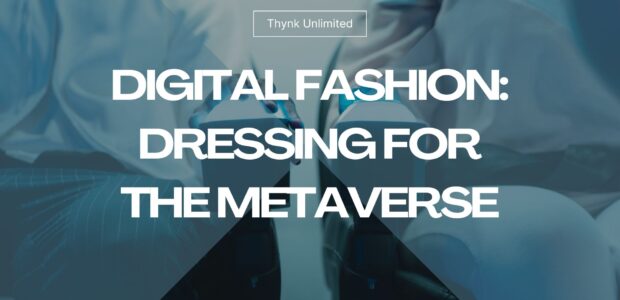Digital Fashion: Dressing for the Metaverse
In 2025, fashion has gone beyond fabric and into pixels. Welcome to the era of digital fashion—where style meets the virtual world, and your avatar’s outfit matters just as much as your real-world look. With the rise of the metaverse, people are expressing identity, status, and creativity through virtual clothing and accessories designed entirely for digital spaces.
1. What Is Digital Fashion?
Digital fashion refers to clothing that exists only in virtual environments. These outfits are created using 3D design software and are meant to be worn by digital avatars across platforms like Decentraland, Roblox, Fortnite, or Meta’s Horizon Worlds. You can’t touch them—but you can wear them online, in games, virtual meetings, or on social media.
2. NFTs and Virtual Ownership
Thanks to blockchain and non-fungible tokens (NFTs), digital garments can now be bought, sold, and owned like real luxury items. Fashion NFTs ensure authenticity, ownership, and rarity. Designers release limited-edition virtual collections where each piece is unique and verifiable on the blockchain.
3. Virtual Runways and Metaverse Fashion Weeks
Major brands like Gucci, Balenciaga, and Nike are embracing the metaverse. They’ve hosted virtual fashion shows, launched in-game clothing lines, and partnered with digital platforms to dress avatars. Metaverse Fashion Week is now an annual event, where digital creators and couture houses showcase collections to global audiences—entirely online.
4. Sustainability and Digital-Only Drops
Unlike traditional fashion, digital clothing produces zero textile waste and has a fraction of the carbon footprint. Designers can experiment freely without the cost of physical production. Digital-only fashion drops offer an eco-conscious alternative in a fast-fashion-dominated world.
5. Self-Expression in the Virtual World
For Gen Z and Gen Alpha, identity in the digital space is just as important as offline. Avatars act as an extension of self, and dressing them allows users to showcase moods, aesthetics, or even social status. Some wear flaming wings, animated cloaks, or branded sneakers that cost more than their real-life counterparts.
6. AR Try-Ons and Virtual Dressing Rooms
In the crossover between real and digital fashion, augmented reality (AR) allows users to try on digital outfits using smartphones or smart mirrors. Apps and e-commerce sites now let you “wear” digital clothes for Instagram posts or to test before buying physical versions.
7. The Future of Fashion Creators
Digital fashion is opening doors for independent designers and 3D artists. You don’t need a sewing machine—just creativity and digital tools. Marketplaces like The Fabricant, DressX, and UNXD allow creators to sell and showcase virtual fashion globally.
Conclusion
Digital fashion isn’t just a trend—it’s a redefinition of fashion itself. As the metaverse continues to grow, our virtual identities will demand just as much attention as our physical ones. Whether for self-expression, status, or sustainability, dressing for the metaverse is becoming a new frontier of creativity, culture, and commerce.


